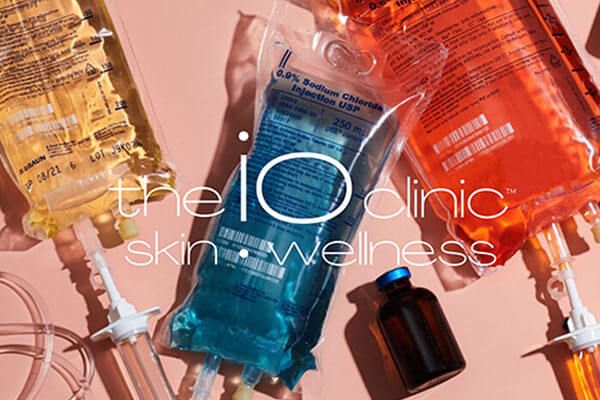Why Choose L&P For Your Rhinoplasty?
Not only are the facial plastic surgeons at L&P Aesthetics all double board certified and fellowship trained in advanced facial aesthetics, but Dr. Lieberman was recently named to America’s Best Plastic Surgeons in the category of rhinoplasty by Newsweek.
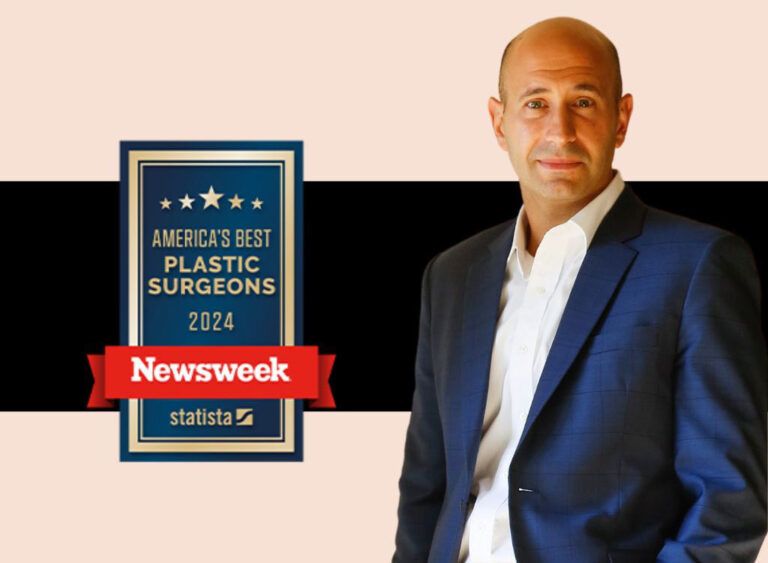





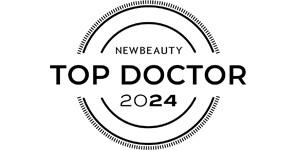
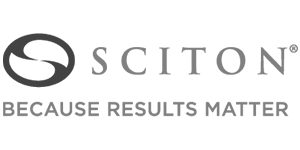






An additional benefit of having surgery with L&P Aesthetics is access to The iO Clinic’s Surgical Recovery Package designed by Drs. Lieberman, Parikh, and Curti. This post-operative recovery protocol enhances your overall recovery, speeds up the recovery timeframe and improves your long-term results.
Rhinoplasty Before and After Gallery
View real results from real patients below.

Deep Plane Facelift Combined with Rhinoplasty
This beautiful patient received a L&P Signature facelift & neck lift, a rhinoplasty, upper blepharoplasty, and chin augmentation! She is an incredible healer as her procedure was done less than 2 months ago! This patient is a business owner that is proud of her company being able to continue its success through the pandemic and wanted to reward her hard work with a refreshed look!

Neck Lift and Rhinoplasty for Lovely Woman
Deep plane face and neck lift, subnasal lip lift, and a rhinoplasty for a stunning patient!

Rhinoplasty, Midline Neck Lift & Chin Augmentation
Just 3 months after a rhinoplasty, chin implant and the L&P midline neck lift, this lovely and beautiful patient is looking great. When done well, subtle contour changes can make a big difference in a person’s overall appearance and sometimes these small changes have a huge impact on a person’s confidence.
Every person is our top priority
Trust Your Beauty To An Award-Winning Team of Aesthetic Experts
America’s Best Plastic Surgeons by Newsweek, 2024
Best Plastic Surgeons by Palo Alto Weekly, 2024
Best of Silicon Valley Magazine for Plastic Surgery, 2024
Castle Connolly Top Doctors of San Francisco Bay Area, 2024
New Beauty Top Doctors, 2024
Am I a Candidate for Rhinoplasty Surgery?
Rhinoplasty is one of the most common cosmetic operations performed on the face. Common reasons patients cite for choosing rhinoplasty include:
- Correcting a high dorsum (hump on the bridge of the nose)
- Reducing the overall size of a nose
- Straightening a crooked nose
- Lifting a droopy tip
- Bringing the tip closer to the face
- Refining a rounded tip
- Narrowing a wide nose
- Lengthening a short nose
This list does not even include the large number of patients who also want to breathe better through one or both sides of their nose. Nasal airway management is a crucial component of rhinoplasty. Only a surgeon who is experienced in nasal airway surgery can maintain or improve a nasal airway while making changes to the external appearance of the nose.
Selecting the right candidate for any surgery, not just rhinoplasty, is an important part of every consultation. The overall goal is to create an aesthetic facial balance and bring about natural harmony.

What is a Rhinoplasty?
Rhinoplasty, commonly known as a nose job, is a surgical procedure aimed at reshaping or repairing the nose. Nose reshaping is often considered the most difficult cosmetic surgery to do well. While the procedure is offered by many, a patient must be extremely careful when choosing a nose job plastic surgeon; not every surgeon is capable of creating consistent and harmonizing facial results in rhinoplasty.
A good rhinoplasty addresses your concerns, leaving a nose that draws noparticular attention to itself but allows all of the beautiful features of your face to shine in harmony. A nose should blend into the rest of a face, not draw attention to it, this allows an observer’s gaze to be drawn to the eyes, the lips, and the contour of the jaw.
At L&P Aesthetics in Palo Alto and Los Gatos, our facial plastic surgeons are considered some of the best rhinoplasty surgeons in the country. They are experienced in providing exceptional rhinoplasty results and revisions for San Francisco Bay Area patients.
Benefits of Rhinoplasty
Improved Facial Proportions
One of the primary motivations for many individuals seeking rhinoplasty is to enhance their overall facial aesthetics. For those dissatisfied with the size of their nose, rhinoplasty offers a solution to create a nose that harmonizes better with their other facial features, resulting in a more aesthetically pleasing appearance.
Refined Nasal Shape
It’s not always the size of the nose that impacts facial harmony. Individuals with asymmetrical noses or noticeable irregularities, such as bumps or indentations, can consider rhinoplasty to achieve a more refined and balanced nasal shape.
Enhanced Nasal Function
Rhinoplasty can also address functional issues. For those experiencing breathing difficulties due to structural abnormalities like a deviated septum, the procedure can include modifications to improve airflow and respiratory function.

What Makes A Good Nose?
The beauty of the nose comes from its complex appearance. If you look closely at a nose you think “fits” a face, take note of why. A “good” nose is proportional to the surrounding features. It is a blend of shadows and highlights, angles and contours. Making a bad nose look good is often a change of millimeters, sometimes even just reducing an unnatural shadow.
What Is The Difference Between An Open & Closed Rhinoplasty?
There is no single, “one-size-fits-all” approach to rhinoplasty. Each patient’s needs are unique, so the surgical methods we use will depend on the size and shape of the existing nose, as well as other factors, including the proportions of the rest of the face and the desired final outcome.
We use either the external (“open”) or endonasal (“closed”) approach when performing rhinoplasty.
During the “open” technique, a small external incision is made on the columella (tissue between the right and left nostrils) to gain access to the interior of the nose. The incision placement allows us to expose the nasal framework and offers a clear line of sight directly into the targeted structures. This can be very beneficial, particularly in complex or involved rhinoplasty surgeries, as everything is available at once. Every effort is made to keep the healed incision line as inconspicuous as possible, and many patients find that the line is barely noticeable, even if you know where to look.
What Is A Revision Rhinoplasty?
When people talk about getting a “nose job,” they are typically referring to rhinoplasty, as work done during the surgery changes the appearance of their natural nose. This procedure can reduce its size, alter its shape, and balance its proportions.
While all of these benefits can also be a part of revision rhinoplasty, that term is most often used to describe a surgery being done to correct a nose that has been aesthetically changed by prior surgery or trauma. Physical damage can disrupt symmetry, create bulges where there weren’t any before, and more, all of which can be corrected by experienced, facial-focused plastic surgeons who understand how a nose should look in the context of the rest of the face.
Patients who have had lesions removed due to skin cancer treatment, leading to an undesired visual impact on their nose, can also talk to us about skin cancer reconstruction. This is not uncommon, since skin cancer is most likely to appear on the face, and the nose is a prominent feature where cancers can develop. Some skin cancer treatment specialists can also make aesthetic repairs during the removal process, but involved cases are often referred to facial experts who have considerable knowledge of the most current surgical and minimally invasive techniques available.

What Are Other Types of Rhinoplasty?
In addition to a primary rhinoplasty and a revision rhinoplasty, there are other types of rhinoplasties.
Ethnic Rhinoplasty
Ethnic rhinoplasty is a specialized form of rhinoplasty surgery that addresses the unique nasal characteristics and aesthetic goals of individuals from diverse ethnic backgrounds.
Ethnic rhinoplasty aims to enhance the appearance and function of the nose while preserving the patient’s ethnic identity and cultural heritage. It is often performed to correct structural abnormalities, improve breathing, and enhance facial symmetry without altering the patient’s distinctive ethnic features.
Functional Rhinoplasty
Functional rhinoplasty is a surgical procedure designed specifically to improve the functional aspects of the nose, such as enhancing breathing and correcting structural issues that impede nasal function. It can also include aesthetic changes but those are not the primary focus.
What to Expect Before Rhinoplasty Surgery
First you will have a consultation with our rhinoplasty surgeons in Palo Alto, which includes a comprehensive overview of your medical history and an examination of the external and internal anatomy of your nose. Your L&P surgeon will ask several questions about your nose, breathing, and desired outcomes. Pictures will be taken and your surgeon will review these pictures and perform nasal morphing during the consultation. Morphing is a great time to make sure you and the surgeon are on the same page with your goals and what is possible to achieve. There will be plenty of time to answer questions and address any concerns. Time will be spent reviewing the anatomy and the surgical process from your pre operative appointment through the recovery. Finally, before and after as well as recovery pictures will be shared of other cases that are similar to yours.
What to Expect During Rhinoplasty Surgery
Rhinoplasty surgery is performed either under deep sedation or general anesthesia, depending on the procedure’s specifics. We are extremely selective in which anesthesia group we choose, as patient safety is the most important component of the entire process. We only work with board-certified anesthesiologists who specialize in cosmetic surgery. The procedure can take 2 to 4 hours, depending on the complexity of the case and whether a revision rhinoplasty is being performed. All of the surgeries at L&P Aesthetics take place in our private, fully-certified surgical center, AAASC,in Palo Alto.
What to Expect After Rhinoplasty Surgery
Our philosophy is to see you early and often after surgery. So many questions arise in the first two weeks following any surgery that we believe setting up a series of appointments for that time period should ease any anxiety a patient may have about the recovery process. If sutures are present, they are removed three days after surgery. Finally, the cast is removed seven days after surgery.
Rhinoplasty Recovery
- Suture Removal: 3 days (if present)
- Cast Removal: 7 days
- Return To Work: 1-2 weeks
- 75% Recovery: 3-6 months
- 100% Recovery: 1 year
During that first week of rhinoplasty recovery, you will be encouraged to keep your head higher than your chest, even when you’re settling in to rest. This will reduce swelling.
Our core objective is to provide a safe, comfortable surgical experience that aspires to restore your appearance and aims to produce natural results. Keep in mind, though, that each patient’s rhinoplasty is his or her own. We do not re-create other people’s noses, but instead, shape our patients’ own noses to best suit their faces.
Rhinoplasty Recovery and Beyond
Rhinoplasty surgery is performed either under deep sedation or general anesthesia, depending on the procedure’s specifics. We are extremely selective in which anesthesia group we choose, as patient safety is the most important component of the entire process. We only work with board-certified anesthesiologists who specialize in cosmetic surgery. The procedure can take 2 to 4 hours, depending on the complexity of the case and whether a revision rhinoplasty is being performed.
Rhinoplasty FAQs
Rhinoplasty is a surgery to change the shape or appearance of the nose. Also known as a “nose job,” the surgery can be done for either cosmetic or functional (breathing) reasons but is often a combination of both. The surgery involves contouring the underlying framework of the nose to add strength or improve the appearance. This is done through a combination of cartilage grafting, strategic suture placement and sculpting of cartilage and bone.
The cost for a Bay Area rhinoplasty varies with the specifics of the surgery and individual patient needs. You will discuss the details of your surgery or other treatment, as well as the projected cost, at your consultation.
Patients are free to bring in photos of examples of noses they like in terms of size, shape, or proportion for reference. This can be helpful in communicating an idea of an end goal, but we emphasize that what looks good on one face might not work aesthetically on another. The key with rhinoplasty is to remember that we work with each person so that the nose harmonizes with all of the other features and “works” for the individual.
As facial specialists, we take a variety of elements into account, including how well the nose fits in the middle third of the face when viewed from top to bottom, its width, the angle where the nose meets the forehead, the angle and shape of the nasal tip, the size and shape of the nostrils, the presence or absence of a “nasal hump,” how all of these interact with each other, how all of these interact with other parts of the face, and more.
There is no single, “one-size-fits-all” approach to rhinoplasty. Each patient’s needs are unique, so the surgical methods we use will depend on the size and shape of the existing nose, as well as other factors, including the proportions of the rest of the face and the desired final outcome.
We use either the external (“open”) or endonasal (“closed”) approach when performing rhinoplasty.
The open approach is in contrast to a “closed” rhinoplasty, in which all incisions are made entirely within the nasal interior. Most obviously, this method avoids any potential of a visible scar, though it also limits viewing options into the nasal framework.
At the initial consultation, we’ll discuss which technique will be used. This will be determined based on whether the open or closed rhinoplasty approach will allow us to best reshape the nasal cartilage, bones, and soft tissue to obtain the most precise and predictable result.
The septum is typically the source for all grafting material needed to create contour and definition in the nose. For revision rhinoplasty, grafting material is occasionally taken from the ear or rib. If there is even a chance of using this material, we will review it with you in detail during the initial consultation. We always want patients to feel comfortable with the plan, so we aim to avoid surprises.
Since a key element in a successful rhinoplasty is balance, the surgery often prompts patients to think more about their facial aesthetics as a whole.
Once their nose has healed properly, some people choose to get an aesthetic treatment, such as skin resurfacing via lasers, chemical peels, or dermabrasion to reduce their pore size and sunspots, and even out their skin tone.
On a more involved level, some rhinoplasty patients want other facial features to structurally change as well. A chin augmentation, for instance, can help create a more dramatic difference by reshaping that area for a bolder, rejuvenated look. This can be a long-lasting, surgical choice, or can be handled with minimally invasive and temporary dermal fillers, such as JUVÉDERM VOLUMA® or RADIESSE®.
Other available procedures include otoplasty (also known as ear shaping), surgical or non-surgical lip augmentation, neck liposuction, and more.
Patients are often surprised by how little discomfort they experience after a nose job. Most have only minor pain or discomfort for the first 1 to 3 days. It is common to feel stuffy for about a week until the cast is removed. Rhinoplasty results last indefinitely as long as there is no trauma to the nose. While the aging process cannot be stopped, it doesn’t significantly affect the shape of the nose for most people.
Rhinoplasty is a highly complex procedure that changes the appearance of the nose and can affect a patient’s breathing. It should be performed by an experienced specialist. Drs. Lieberman and Parikh are certified by both the American Board of Otolaryngology-Head and Neck Surgery and the American Board of Facial Plastic and Reconstructive Surgery, and Dr. Curti is a facial plastic surgeon who is certified by the American Board of Otolaryngology-Head and Neck Surgery, making them excellent choices for your rhinoplasty procedure.
The cost of a rhinoplasty depends on several factors including the expertise of the surgeon, difficulty of the case, location (facility and anesthesia fees), whether insurance is involved or whether it is a primary or revision.
Typically people feel comfortable returning to work or school 7-10 days after surgery after the first post operative appointment during which the cast and sutures are removed. While the nose typically looks and feels better sooner, it can take up to a year or longer for the swelling to completely resolve after the surgery.
There are several different types of rhinoplasty. The surgery can be done via open and closed techniques. An open technique involves a small incision across the base of the nose and gives the surgeon better access to reshaping and restructuring the nose. A closed, or endonasal, technique is done through internal incisions and can be utilized for more minor changes to the nose. Both techniques have advantages and disadvantages. The technique used will be dependent on each rhinoplasty surgeons experience and expertise.
Rhinoplasty surgery can take anywhere from 2 to 5 hours depending on the difficulty of the case and whether it is a revision or primary surgery.
Rhinoplasty is done by reshaping and restructuring the underlying framework made of up bone and cartilage of the nose. This usually involves a combination of grafting, suturing, and removal of excess tissue depending on what changes are desired. Each surgery is unique and Drs. Lieberman, Parikh and Curti often will use a combination of techniques to achieve the desired outcome.
When a rhinoplasty is done well, with proper techniques and knowledge of how the nose ages, it should last for your entire lifetime. Normal aging processes like cartilage and ligament weakening, collagen breakdown and skin changes over decades can lead to some minor changes in the appearance of the nose, but will not affect the results of the surgery. There are no maintenance or secondary procedures that need to be done once the nose surgery has healed.
Rhinoplasty surgery is done under general anesthesia and is well tolerated. There is expected discomfort for a period of 3-4 days after the surgery which can be managed with pain medications, rest and cool compresses. By the end of the first week the discomfort is either gone or minimal enough that medications are no longer needed.
Rhinoplasty is a safe surgery when done by a qualified rhinoplasty surgeon with experience and expertise preforming the surgery like Drs. Lieberman, Parikh or Dr. Curti. All surgeries have certain risks and it is no different with rhinoplasty. Specific risks include infection, bleeding, and scarring. It is important to follow your surgeons post operative care instructions to ensure the best possible outcome.
Tape is typically placed by your rhinoplasty surgeon under the case for the first week. Once the tape and cast is removed at the one week post surgery appointment, taping is rarely required. Drs. Lieberman, Parikh and Curti will show you specific nasal massage techniques to help reduce swelling.
The nose is very delicate in the first few weeks after surgery. A cast is usually placed for the first week to help protect the nose. After the cast is removed it is ok to touch, clean and even massage the nose following Drs. Lieberman, Parikh and Curti’s instructions, but it is important to avoid bumping or getting hit in the nose for the first 6 weeks after surgery. Often the nose is tender to touch during this healing period. It is usually recommended to avoid wearing glasses or heavy wire lined masks that put pressure on the nose for the first 6 weeks after surgery.
This is different for each individual. In general the nose feels stiff for 6-12 months after nose surgery. Numbness can occur and may last up to a year but often normal sensation returns well before this time. Tenderness to touch improves over the first 6-8 weeks.
Blowing your nose is not advised right after surgery as it can increase the risk of nosebleeds and put a lot of pressure on the healing structures. Most people can begin lightly blowing their nose after two weeks and can fully blow their nose by three weeks. Instead of blowing your nose it is recommended to use saline irrigations to help keep the nose clean.
Yes! Depending on what is causing your difficulty in breathing, rhinoplasty is one of the most effective surgeries to improve breathing. Most rhinoplasty surgeries include straightening the septum and often add strength to the structure of the nose to help open the airway and improve breathing. Drs. Lieberman, Parikh and Curti all have training and expertise in both breathing and aesthetic nasal surgery.
There are several criteria that make one a good candidate for rhinoplasty surgery. If you are healthy without any major medical issues, do not smoke, and have realistic expectations you are likely a good candidate for the surgery. It is best to meet with a qualified rhinoplasty surgeon like Dr. Lieberman, Parikh or Curti to discuss your goals and candidacy for the surgery.
It is best to wait until the nose and facial skeleton stops growing. For females this is often around ages of 16 or 17 and men closer to 17 or 18 but this is unique to each individual. Rhinoplasty surgery can be done before this age for unique cases like nasal trauma, cleft lip/palate, or extreme difficulty breathing.
During the consultation Drs. Lieberman, Parikh and Curti will perform a complete history and physical exam. They will ask several questions about your nose, breathing, and desired outcomes. Pictures will be taken and your surgeon will review these pictures and perform nasal morphing during the consultation. Morphing is a great time to make sure you and the surgeon are on the same page with your goals and what is possible to achieve. There will be plenty of time to answer questions and address any concerns. Time will be spent reviewing the anatomy and the surgical process from your pre operative appointment through the recovery. Finally, before and after as well as recovery pictures will be shared of other cases that are similar to yours.
When choosing the best rhinoplasty surgeon for you, you should seek someone who is board certified in Facial Plastic and Reconstructive Surgery with experience with rhinoplasty. It is a good idea to meet with several surgeons prior to making your decision. You should look at before and after pictures and ask your surgeon questions. You want to find someone you are comfortable with and who you feel understands your goals for the surgery.
Yes, rhinoplasty is often combined with other facial procedures. It can be performed as part of a facial rejuvenation surgery with a face neck lift, eyelid surgery or laser resurfacing. One of the most common combinations is a rhinoplasty and chin augmentation as it can often help restore facial balance. During the consultation you will have the opportunity to discuss you goals with your surgeon who can help provide a customized treatment plan.
There is evidence that increased airflow and changes to the nasal airway can cause subtle resonance changes to the voice. These changes are usually very minor and most people do not notice the changes. If you are a professional voice user this is an important discussion with your surgeon.
Drs. Lieberman, Parikh and Curti recommend waiting 6 weeks before wearing glasses after surgery. This is to ensure enough time for the nose to settle. There are special headbands that can be worn that keep the glasses off the nose or taping the glasses to the forehead works as well. Contacts are ok after surgery.
Rhinoplasty is performed under general anesthesia.
There are several different techniques used in rhinoplasty surgery. The most common techniques include cartilage grafting, strategic suture placement and sculpting of cartilage and bone. Depending on the desired changes Drs. Lieberman, Parikh and Curti will use a combination of the above techniques to to achieve the desired results.
Most people feel comfortable returning to work 7-10 days after rhinoplasty surgery. If you can afford 2 weeks off it can be beneficial to allow more swelling to resolve.
Revision rhinoplasty often is more difficult and takes longer than a primary rhinoplasty for several reasons. During a revision rhinoplasty the surgeon typically has to deal with scar tissue, previous changes to the framework and a depletion of cartilage. Oftentimes a secondary source of cartilage for grafting is needed. The surgery is less predictable and requires more expertise than a primary rhinoplasty.

